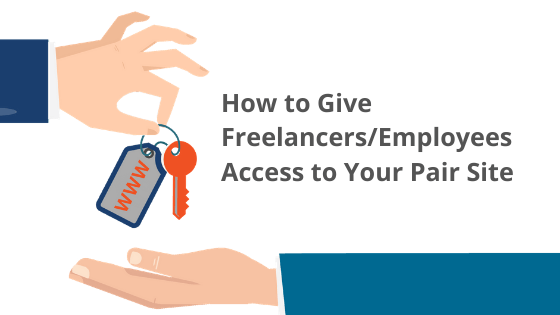
In our previous blog post, we discussed the benefits of creating a blog. Now that we’ve established why creating a blog is a great business move, we’ll consider what steps go into making a successful blog.
Design
A successful blog requires an easy-to-read design. Why is an appealing, intuitive design so important to your blog, though?
Design Flaws Come With a Big Cost
Let’s start by looking at not-so-great things that happen when your site design isn’t the best. What are some of the issues caused by poor blog design?
Bad Design Leads to a High Bounce Rate
Bounce rate refers to the number of people who visit your site but leave without viewing additional pages. A low bounce rate means that visitors tend to stay on your site longer. In contrast, a high bounce rate shows that visitors are leaving your site quickly.
A hard-to-read and unappealing blog design can impact your site’s bounce rate. If people think that your blog design sucks, then they probably aren’t going to stick around to read much of anything at all. In turn, your bounce rate is going to increase.
You’re Probably Going to Lose Readers
If visitors have issues with your blog design, then you’re going to lose potential customers. You could have the best content in the world, but, if your site design is subpar, then readers are going to judge your site and find it lacking.
Ideally, you want to build up your readership so that your content followers naturally promote your blog. Implementing an easy-to-read and appealing design is a major way to gain such a following.
A Few Elements of Good Design
Here are a few tips for creating reader-friendly blog designs:
Use Readable Fonts
You want your readers’ experiences with your blog’s font to be seamless and barely noticeable; you don’t want visitors fleeing your site because of poor font choices. Too-small font sizes can certainly deter visitors from staying on your site.
What Makes a “Good” Font?
Here are some characteristics of ideal font choices:
- Medium to large font size
- Body text to be a minimum of 16 px
- Basic style (such as Arial, EB Garamond, or Josefin Slab)
- Avoid more “far-out” designs (such as Comic Sans)
PLEASE Organize Your Blog
Trust us–spending the time to properly organize your blog will pay dividends in the future. Creating a “flow” to your blog will make your readers’ lives easier and will benefit you in the long run, too.
Connect Your Content With a Common Theme
Otherwise known as a “blog niche,” this theme will deeply impact the success or the failure of your blogging efforts. A blog niche is simply the subject matter that you’re going to spend most of your time discussing. In other words, a blog niche is the main topic of your blog.
In the end, you’ll benefit from having a solid blog niche. Your content will be much simpler for Google to rank, your site will be much easier for visitors to search, and your blog content will come across as straightforward and consistent.
Make a Learning Section
Take part of your website and transform it into an informative, topical page. Readers who visit this section of your site should find answers to common questions about your blog or topics featured in your blog.
Embrace the Skimmers
While some people lament the short attention span of the average blog reader, you’re probably best served by going with this current state of focus. You might as well acknowledge, accept, and create content fit for minds that specialize in skimming (in fact, skimming may actually be an indicator of a mind that excels at processing information).
How do you write blog posts that cater to skimmers? Here are a few ways:
- Arrange your text in short sections
- Use images and headers to separate text
- Be generous in your use of headers and subheaders
- Use bullets and numbers to make long text sections more digestible
By making the layout of your blog easier for skimmers to read, you give yourself more of a fighting chance for blog success.
Don’t Skimp on Images
Blog posts that feature images get 94% more views, and blog posts with 10 or more images are more likely to create stronger outcomes. The quality of your blog’s images definitely matters–especially to SEO. Poor image SEO can seriously mess with your site’s rankings.
Make the Most of Image SEO
Adding images to your blog posts can really help with SEO. Here are a few helpful tips for making image SEO most effective:
- Include one image (at the minimum) in your blog posts
- Including an image signals to Google that your content is informative and engaging.
- Improve site speed by compressing and scaling images
- Images impact your site’s loading speed, and site loading speed affects SEO rankings.
- Slow pages get low SEO rankings
- Compressed and scaled images load more quickly and can boost your website’s SEO ranking
- Use high-quality images
- Engaging, high-quality graphics help to bring more site traffic
Navigation
Like design, your site’s navigability definitely impacts your blog’s success. By impacting your site’s SEO rankings, navigation directly affects your website traffic, potential customer leads, and customer conversion.
How to Establish Good Site Navigation
Site navigation is your visitor’s map of your content. If your readers have issues with getting around your blog, then you’re going to likely face a few major issues. Such problems include an increase in bounce rates as well as an uptick in lower conversion rates and revenue losses.
Instead of settling for crappy navigation, use the following techniques to make your blog the perfect online hangout for readers.
Use Descriptive Labels
Place very specific key phrases in your navigation bar. These phrases should be very descriptive and aptly explain the purpose and the offerings of your blog. Avoid generic phrases such as “goods” or “services,” and instead list terms that specifically apply to your blog’s subject matter.
Don’t Take the Format-Based Route
Format-based navigation focuses on the delivery–rather than the subject–of the content. This formatting method has the unfortunate result of making content harder for users to find. In short, this type of navigation will deliver the opposite result of what you want, which is to have more readers visiting your blog.
Say “No” to Dropdown Menus
Dropdown menus can be really bad for SEO because search engine crawlers have a tendency to struggle with drop down menus. Additionally, users prefer to skip dropdown menus (they apparently find such menus to be annoying). As a result, a dropdown menu might cost you site traffic.
Take It Easy On the Menu Items
Your site’s main page has the most search engine “cool points.” In other words, your main page gives your site the most legitimacy. Since other sites are more likely to link to your main page than to your site’s other pages, search engines base your site’s ranking primarily on the main page. However, the legitimacy of your site’s main page does affect the rankings of your site’s interior pages. The more links you have on your main page, the less legitimacy your site commands. In contrast, fewer main page links leads to greater site legitimacy. This legitimacy is then “shared” with interior site pages.
Site legitimacy based upon links (also known as “link juice”) directly impacts a site’s SEO rankings. More link juice results from fewer main page links and leads to a higher SEO ranking. A shortage of link juice (resulting from an over-dilution of main page links) creates a lower SEO ranking.
Content
Creating quality content can be tough. So much goes into creating the perfect blog post. Firstly, your content needs to be interesting, informative, and engaging. You’ll also need a strong topic, and an attention-getting title. Then, you have to provide an appropriate introduction. Let’s not forget about the captivating headlines, either.
So, with all the requirements for creating excellent content, where should you start, and what should you know?
What Counts as “High Quality” Content?
Well, the answer depends upon the platform and the audience. In any case, you’ll want your content to be relevant. Ultimately, you win if your blog content is original, establishes you as a subject matter authority, and if people can easily find your site (aka, Google gives you a higher SEO ranking).
Web Hosting Options Perfect for Bloggers
WordPress Plans
Pair offers five WordPress plans to meet your needs. Ranging in price from $14.95/month to $99.00/month, all of the WordPress plans feature the following perks:
- 24/7 technical support
- Automatic core updates
- Automatic backups
- Site stating
- Free SSL certificates
Why You Should Choose Pair
You might be wondering why you should choose Pair over other WordPress hosting providers. Here are a few reasons to consider:
- Pair has been offering WordPress hosting since WordPress was even a thing. In other words, Pair has a ton of experience with WordPress hosting, and your site will be in excellent hands.
- Pair has been offering web hosting plans for over 24 years. In addition to being WordPress experts, we’re all-around web hosting aficionados.
- Our uptime is over 99.9%. It’s safe to say that your site is not likely going down anytime soon when your web hosting is with Pair.
- We don’t mess around with price gimmicks or murky marketing. With Pair, the price you see is the price that you get. Additionally, we don’t charge upgrade or downgrade fees if you change your WordPress plan. Heck, we don’t even require contracts.
Weebly Plans
Maybe WordPress isn’t your thing. No worries; Pair’s got you covered. With five Weebly plans to choose from, you’ll no doubt find a plan that fits your needs.
Weebly is great because site building is super easy. You use a drag-and-drop builder, and you don’t even have to know how to code. Additionally, Weebly offers professional themes that are optimized for mobile devices. Finally, Weebly even offers built-in eCommerce solutions.
Blog With Pair
Interested in creating and maintaining a successful blog? Connect with Pair and start your blogging journey!
Check out Part I of our series!



